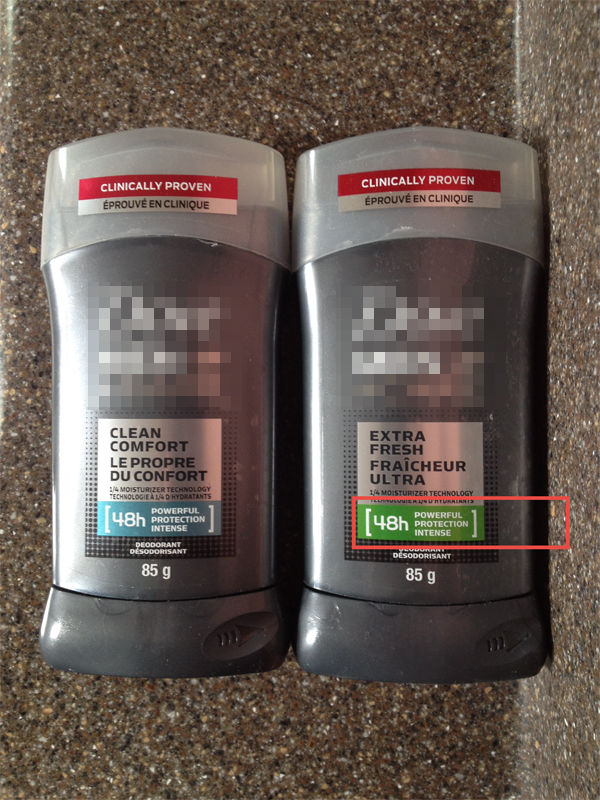(~4 minutes to read)
Does anyone give a rodent’s rectum about truth in advertising anymore, or do we all accept that the claims made about products are fiction and ignore them?
I’m regularly amazed by such claims; so much so that I block them out of my head and therefore can’t recall any, so for now, I’ll make a few up.
Fresh cherries! Guaranteed gluten-free!
Organic firewood for sale!
16% more inside! (more than what? And how does the new price compare?)
Extra strong toilet paper… made with non-GMO fibres!
Our coffee is grown by environmentally-responsible growers! (What’s the legal definition of “environmentally responsible” again?)
100% Alberta beef steaks! (Surely it’s either 0% or 100% Alberta steak! Oh, wait… perhaps the cow could be kept in a pen that just happens to straddle the AB/SK border…)
(Deodorant) 48-hour protection.
The sad thing is that I bet they—or something similar—are all out there in Consumerland, somewhere.
Actually, as you can tell from the picture, the last one is out there.
Two-Day Freshness

That’s right. A brand of deodorant claims it can prevent odours for up to forty-eight hours.
Interesting.
Personally, I find that about as likely as raw chicken skin smelling fresh after two days in the sun.
I use deodorant rather than antiperspirant (I have a problem blocking my pores with powdered aluminum), and I have yet to discover a deodorant that will work for more than four or five hours unless I sit shirtless in a walk-in refrigerator holding a bag of ice under each arm, in which case it might stretch to six hours. (Guess how I know.)
In humid climates, deodorants struggle to be effective in my pits for more than a couple of hours. Here in the semi-desert that is southern Alberta, it’s like being in a walk-in refrigerator outside for a good part of the year (the rest of the year, it’s like being in a walk-in freezer), so I can be pong-free for four or five hours. Unfortunately, those are the hours I’m on my own in my basement office. Socializing with other people seems to act like a switch on my pits, because lo and behold, that familiar odour wafts out.
I do use the “48hr protection” brand, but only because their fragrances don’t make me smell like a gigolo’s banana hammock. (Now I suppose you’re asking yourself how I know what they smell like!)
I long ago gave up hoping that deodorants would keep me smelling fresh all day.
Just a Local Thing?
When I first spotted the claim on the deodorant packaging, I wondered if it was a new ploy by the Town of Okotoks to conserve water. (The town suffers from chronic lack of water.) After all, if your deodorant’s going to last you 48 hours, you don’t want to waste money by showering every day and washing the deodorant off.
But when I went digging on the manufacturer’s website, I discovered that the product and the claim are available outside of Okotoks—all over North America and further afield as a matter of fact.
According to the Washington Post, it took the American Food and Drug Administration (FDA) 20 years to approve a claim that anti-perspirants work for up to 24 hours, so the personal products industry asked the FDA to extend their ruling to include a claim that antiperspirants will last for up to 48 hours. The FDA agreed to do so, on condition that the manufacturers provided studies that back up the claims.
You Can Prove Anything With Stats
This led me to wonder how the manufacturers test deodorants. With antiperspirants, testers can at least measure the amount of sweat produced in an armpit with product applied and compare that with an armpit that’s antiperspirant-free (0.0006 liters per day, apparently). Most of us have two armpits, so presumably it’s easy to do a meaningful comparative trial.
But deodorants don’t control, manage, eliminate, reduce, or prevent perspiration. Their raison d’etre is to attempt genocide on the millions of fat- and protein-eating bacteria in your armpits.
How do the manufacturers measure the effectiveness of that genocide?
The Challenges of Measuring Bacteria Genocide Rates
For sure, they don’t send United Nations observers in. A different method is required, so I resorted to math.
Apparently, the average lifespan of a bacterium is about twelve hours or so. Apparently, we have about a million bacteria per square inch in our armpits. Let’s assume that the average armpit is ten square inches (okay—that was a complete guess).
The deodorant manufacturers would need a team of bacteria medics that’s large enough to check for signs of life in ten million bacteria every hour. Each bacterium would need to be assessed, and the totals tallied. This would need to be done every hour for forty-eight hours, in order to observe the increased mortality rates and the reduced reproduction rates.
And the same exercise needs to be performed in parallel on the un-deodorized armpit so that a valid comparison can be made.
How do you get that many medics around an armpit?
How do you check for signs of life in a bacterium? Not with a stethoscope, I’ll wager.
How do you keep track of which bacteria have been assessed and which haven’t?
And with so many medics fighting for access to the armpits, there would be other factors to account for—participant stress and the body heat of the medics, for example.
Presumably, with such intense activity in the armpits, the participant’s arms would have to be raised, which opens up the armpit and compromises the natural environment of a sweaty armpit.
So I ask again, how do the manufacturers test the 48-hour effectiveness of deodorants?
That’s not a rhetorical question… If you know, please tell me by leaving a comment below.
